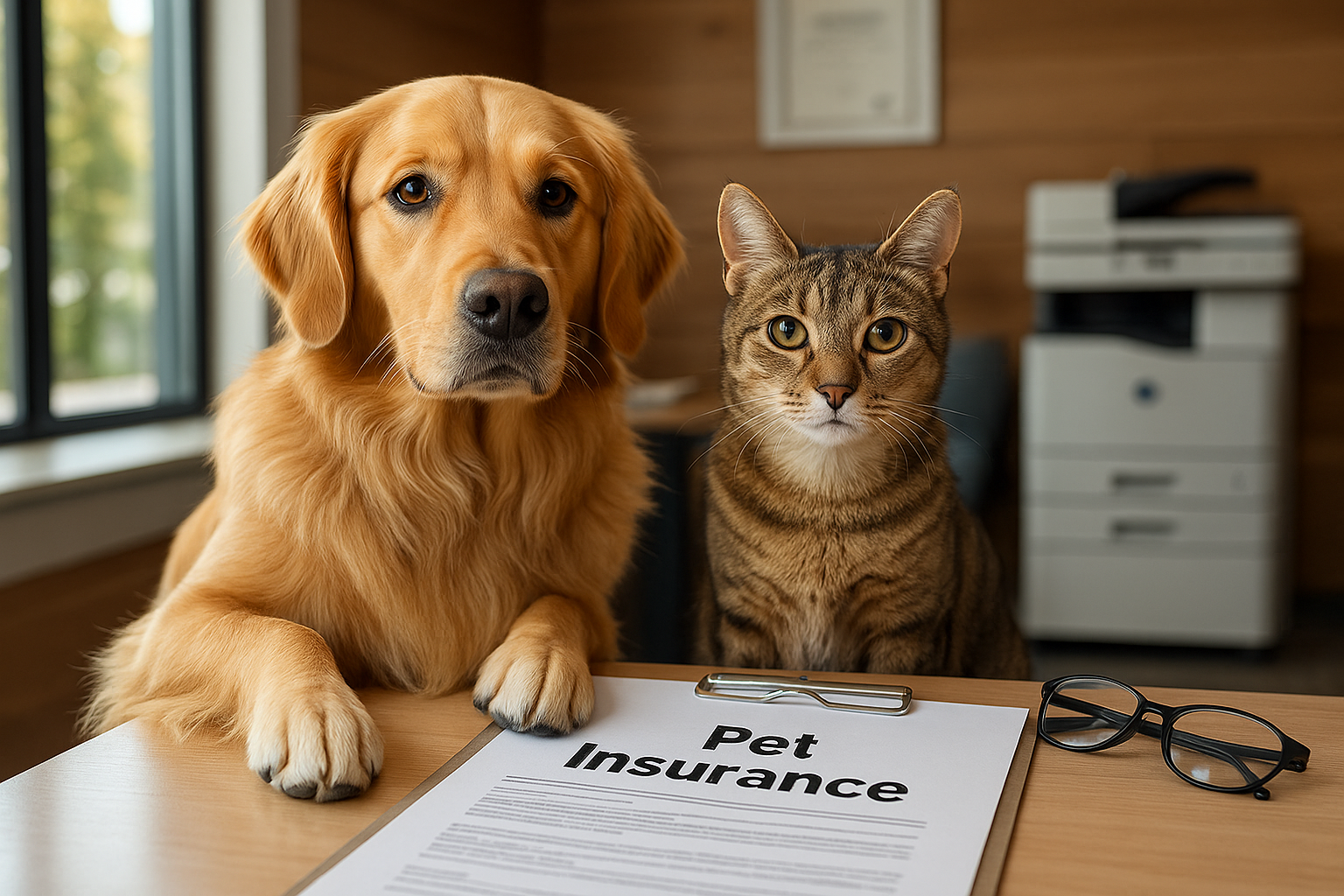What Is Pet Insurance?
Pet insurance is a health insurance policy for pets that helps cover veterinary costs. It works similarly to human health insurance: you pay a monthly premium, and in return, the insurance provider reimburses a portion of your pet’s medical expenses.
Why Is Pet Insurance Important?
- Unexpected Costs: Veterinary care can be expensive, especially for emergencies or chronic conditions.
- Peace of Mind: Knowing you’re financially prepared allows you to focus on your pet’s recovery.
- Access to Better Care: Pet insurance ensures you won’t have to compromise on treatment due to cost.
How Does Pet Insurance Work?
Pet insurance typically operates on a reimbursement model. Here’s how it works:
- Visit the Vet: Take your pet to the veterinarian for treatment.
- Pay the Bill: You pay the vet bill upfront at the time of service.
- Submit a Claim: Send the invoice and necessary documentation to your insurance provider.
- Get Reimbursed: The insurer reimburses you based on the terms of your policy (e.g., 70%, 80%, or 90% of covered costs).
What Does Pet Insurance Cover?
Pet insurance coverage varies depending on the provider and policy. Here are the most common types of coverage:
1. Accident-Only Coverage
This plan covers injuries caused by accidents, such as broken bones, cuts, or swallowed objects.
- Example: Your dog breaks a leg after jumping off the couch.
2. Accident and Illness Coverage
This comprehensive plan includes both accidents and illnesses, such as infections, cancer, or allergies.
- Example: Your cat develops kidney disease or your dog is diagnosed with diabetes.
3. Wellness or Preventive Care
Some policies offer add-ons for routine care, including vaccinations, flea prevention, and annual check-ups.
- Example: Your dog needs a yearly heartworm test or dental cleaning.
4. Chronic and Hereditary Conditions
Certain plans cover chronic conditions (e.g., arthritis) and hereditary issues (e.g., hip dysplasia), which are common in specific breeds.
What’s Not Covered by Pet Insurance?
Pet insurance policies often have exclusions, so it’s essential to read the fine print. Common exclusions include:
- Pre-Existing Conditions: Illnesses or injuries your pet had before coverage started.
- Cosmetic Procedures: Non-essential surgeries like tail docking or ear cropping.
- Behavioral Issues: Training or therapy for behavioral problems may not be covered.
- Breeding Costs: Costs related to pregnancy or breeding are usually excluded.
How Much Does Pet Insurance Cost?
The cost of pet insurance depends on several factors:
1. Pet’s Age:
Older pets are more likely to develop health issues, leading to higher premiums.
2. Breed:
Certain breeds are prone to specific health problems, which can affect costs. For example:
- Bulldogs may have higher premiums due to respiratory issues.
- German Shepherds are more prone to hip dysplasia.
3. Location:
Veterinary costs vary by region. Urban areas typically have higher vet fees, which can increase premiums.
4. Coverage Level:
Comprehensive plans with higher reimbursement rates and lower deductibles cost more.
Average Monthly Premiums:
- Dogs: $30–$50 for accident and illness coverage.
- Cats: $15–$30 for accident and illness coverage.
How to Choose the Best Pet Insurance
Selecting the right pet insurance policy can feel overwhelming. Here are some tips to help you make an informed decision:
1. Evaluate Your Pet’s Needs
Consider your pet’s age, breed, and medical history. For example, a young, healthy pet may only need accident coverage, while an older pet may benefit from comprehensive coverage.
2. Compare Providers
Research multiple providers to compare:
- Monthly premiums
- Reimbursement rates (e.g., 70%, 80%, or 90%)
- Annual limits and deductibles
3. Check for Waiting Periods
Most policies have a waiting period before coverage begins. This can range from a few days for accidents to several weeks for illnesses.
4. Read Reviews
Look for reviews from other pet owners to assess the provider’s reliability and customer service.
5. Understand the Fine Print
Ensure you know what’s covered and excluded in the policy. For example, does the plan cover hereditary conditions or alternative therapies like acupuncture?
Benefits of Pet Insurance
Investing in pet insurance offers several advantages:
- Financial Protection: Avoid unexpected vet bills that can strain your budget.
- Better Treatment Options: Access advanced treatments like surgery or chemotherapy without worrying about cost.
- Customizable Plans: Choose a plan that fits your pet’s specific needs and your budget.
- Peace of Mind: Focus on your pet’s health without financial stress.
Real-Life Example: How Pet Insurance Saved the Day
Sarah, a pet owner from California, never thought she’d need pet insurance until her Labrador Retriever, Max, swallowed a sock and required emergency surgery. Without insurance, the $3,000 procedure would have been a financial burden. Fortunately, her pet insurance reimbursed 80% of the cost, allowing her to focus on Max’s recovery instead of worrying about money.
Alternatives to Pet Insurance
If pet insurance isn’t the right fit for you, consider these alternatives:
- Pet Savings Account: Set aside money each month specifically for pet-related expenses.
- Discount Plans: Some veterinary clinics offer discount plans for routine care.
- Charitable Organizations: Nonprofits like the ASPCA may provide financial assistance for emergency care.
Final Thoughts
Pet insurance is a valuable tool for protecting your furry friend’s health and your finances. By investing in the right policy, you can ensure your pet receives the best care possible without breaking the bank.
Whether you’re considering pet insurance for the first time or looking to switch providers, take the time to evaluate your pet’s needs, compare options, and read the fine print. With the right coverage, you can enjoy peace of mind knowing you’re prepared for whatever life throws your way.
Remember, your pet’s health is priceless—and with pet insurance, you can give them the care they deserve without compromise.

